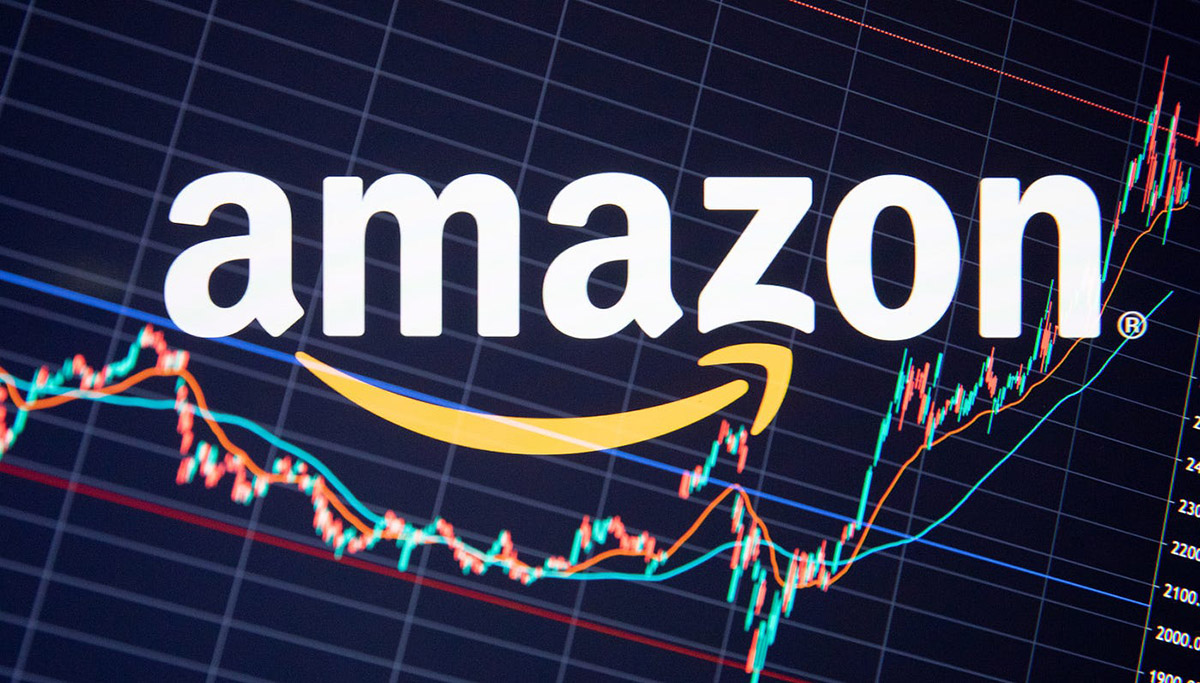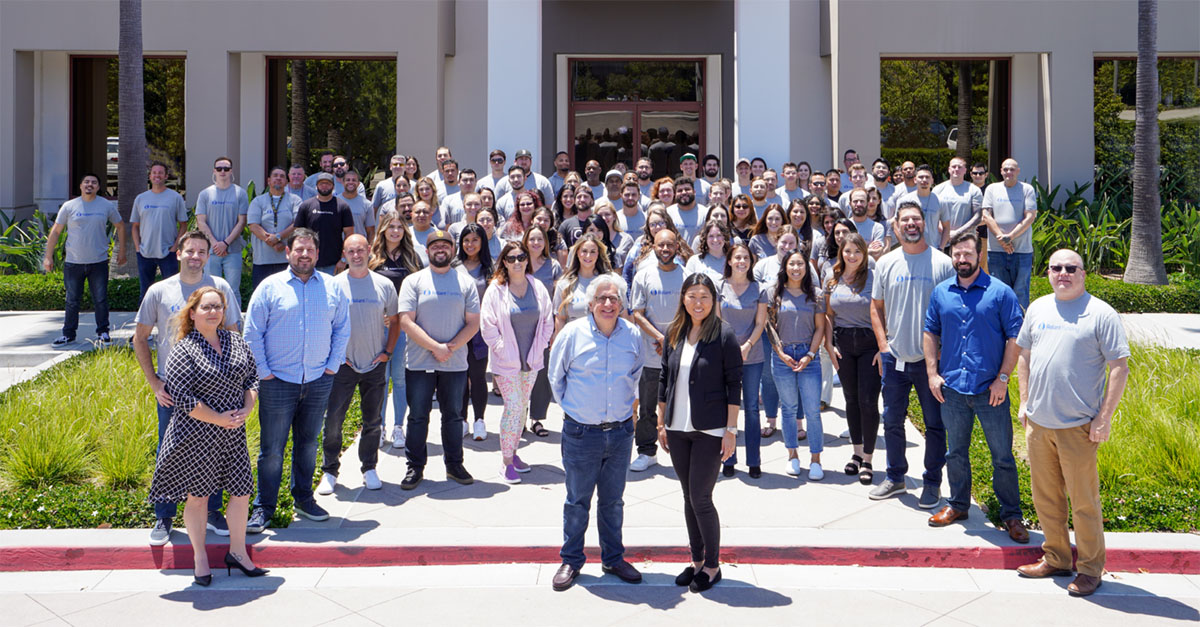

Finance
Why Is Gm Offering Buyouts
Modified: December 30, 2023
Discover why GM is offering buyouts and how it impacts the world of finance. Explore the financial implications and benefits of this strategic move.
(Many of the links in this article redirect to a specific reviewed product. Your purchase of these products through affiliate links helps to generate commission for LiveWell, at no extra cost. Learn more)
Table of Contents
- Introduction
- Overview of GM’s buyout program
- Reasons behind GM offering buyouts
- Impact of buyouts on GM and its employees
- Analysis of potential benefits and drawbacks of the buyout program
- Comparison of GM’s buyout program with similar initiatives in the industry
- Current response and opinions from GM employees regarding the buyout program
- Potential long-term effects of GM’s buyout program
- Conclusion
Introduction
General Motors (GM), one of the largest automobile manufacturers in the world, recently announced its decision to offer buyouts to a portion of its employees. This move has sparked curiosity and raised questions about the company’s motives and the potential impact on its workforce. The buyout program, a voluntary initiative, is aimed at streamlining operations and reducing costs.
In this article, we will delve into the details of GM’s buyout program, explore the reasons behind this decision, and analyze both the positive and negative implications. Furthermore, we will compare GM’s buyout program to similar initiatives in the industry and assess the response and opinions of GM employees.
Before we proceed, it is essential to understand the concept of a buyout. In the corporate world, a buyout refers to a financial transaction in which a company offers to purchase the shares or interests held by its employees or shareholders. In this case, GM is offering its employees the opportunity to voluntarily leave the company and receive a severance package in return.
Now, let’s take a closer look at why GM has chosen to implement this buyout program and what it means for the future of the company and its workforce.
Overview of GM’s buyout program
GM’s buyout program is a voluntary initiative that aims to reduce costs and streamline operations within the company. The program offers eligible employees the opportunity to leave the company in exchange for a severance package. The specifics of the buyout program, such as the number of employees eligible and the terms of the severance package, have not been publicly disclosed.
This buyout program comes at a time when GM is facing significant challenges in the rapidly evolving automotive industry. Factors such as changing consumer preferences, increasing competition, and the rise of electric vehicles have put pressure on traditional automakers to adapt and remain competitive.
By offering a voluntary buyout program, GM aims to reduce its workforce and eliminate redundancy, thus achieving cost savings. This reduction in workforce is expected to have a positive impact on the company’s financials, enabling it to reallocate resources and invest in future technologies.
It is important to note that the buyout program is not mandatory, and employees can choose to remain with the company if they wish. Those who opt for the buyout will receive a severance package, which typically includes a financial compensation based on their years of service, health benefits, and other assistance to facilitate their transition to new employment or retirement.
GM’s buyout program is part of a larger effort to adapt to the changing landscape of the automotive industry. The company has been investing heavily in electric and autonomous vehicles, aiming to position itself as a leader in these emerging technologies. The buyout program is intended to free up resources and redirect them towards these strategic initiatives.
While the buyouts will inevitably result in a reduction in workforce, GM has stated that it remains committed to attracting and retaining top talent. The focus is on ensuring the company has the right skill set and expertise to succeed in the evolving automotive market.
Now that we have an overview of GM’s buyout program let’s explore the underlying reasons and motivations behind this decision.
Reasons behind GM offering buyouts
GM’s decision to offer buyouts to its employees stems from a combination of strategic, financial, and market-related factors. Let’s explore the key reasons behind this initiative:
1. Cost Reduction: One of the primary reasons for GM offering buyouts is to achieve cost savings. With the automotive industry undergoing significant transformations, there is a need for GM to optimize its operations and maintain financial stability. By reducing its workforce through voluntary buyouts, GM can reduce labor costs and potentially streamline its operations.
2. Streamline Operations: The buyout program enables GM to address redundancy within the company. As market dynamics and consumer preferences change, certain positions and functions may become less relevant, requiring reallocation of resources. The buyout program allows GM to restructure its workforce and ensure that it aligns with the company’s evolving needs.
3. Focus on Electric and Autonomous Vehicles: Another key reason behind the buyout program is GM’s strategic focus on electric and autonomous vehicles. The company aims to position itself as a leader in these emerging technologies, which require significant investment and specialized expertise. By offering buyouts, GM can redirect resources toward research, development, and production of electric and autonomous vehicles.
4. Adaptation to Market Changes: The automotive industry is witnessing a shift in consumer preferences, with increased demand for electric vehicles and advancements in autonomous driving technology. To remain competitive, GM needs to adapt and invest in these areas. By offering buyouts, GM can realign its workforce and acquire the necessary talent and skills to thrive in the changing market landscape.
5. Improved Financial Performance: The buyout program is aimed at improving GM’s financial performance. By reducing labor costs and optimizing operations, the company can enhance profitability and allocate resources to strategic initiatives, such as research and development, marketing, and expanding into new markets.
In summary, GM’s decision to offer buyouts is driven by the need to reduce costs, streamline operations, adapt to market changes, and focus on future technologies. By strategically realigning its workforce, GM aims to enhance its competitiveness and financial performance in the rapidly evolving automotive industry.
Impact of buyouts on GM and its employees
The buyout program implemented by GM will have both short-term and long-term impacts on the company and its employees. Let’s examine the effects in more detail:
1. Cost Savings: The buyout program is expected to result in significant cost savings for GM. By offering severance packages to eligible employees, the company can reduce its payroll expenses and potentially redirect those funds towards strategic initiatives, research and development, and technological advancements.
2. Workforce Reduction: The buyouts will inevitably lead to a reduction in GM’s workforce. While the specific number of employees opting for the buyout has not been disclosed, this reduction could result in a leaner and more efficient organization. However, it may also lead to increased workloads for remaining employees and potential gaps in expertise in certain areas.
3. Employee Morale and Loyalty: The buyout program may impact employee morale and loyalty within the company. Some employees may choose to leave voluntarily, making it crucial for GM to carefully manage the transition process and ensure that departing employees are provided with appropriate support and resources for their career transitions. On the other hand, the uncertainty surrounding the program may create anxiety and affect the morale of employees who decide to remain with the company.
4. Talent Retention: While the buyout program focuses on reducing the workforce, it is important for GM to simultaneously prioritize talent retention. To maintain a competitive edge in the industry, GM needs to retain skilled and experienced employees who contribute to the company’s success. With careful planning and strategic talent management, GM can ensure it retains the right people to drive innovation and growth.
5. Organizational Restructuring: The buyout program provides an opportunity for GM to restructure its organization and reallocate resources to areas that align with its strategic goals. This may involve closing or consolidating certain facilities, creating new departments or divisions, and redistributing responsibilities. Such restructuring can enhance operational efficiency, agility, and enable GM to better navigate the changing automotive landscape.
6. Industry Perception: The success and management of the buyout program can also impact how GM is perceived within the industry. Efficient execution and positive outcomes can demonstrate GM’s commitment to adapting to market changes and position the company as a forward-thinking player in the automotive sector.
Overall, the buyout program will have both short-term and long-term impacts on GM and its employees. While cost savings and workforce reduction are immediate benefits for the company, it is crucial for GM to carefully manage the transition process, prioritize talent retention, and ensure employee morale and loyalty are maintained to support long-term success.
Analysis of potential benefits and drawbacks of the buyout program
The buyout program implemented by GM carries both potential benefits and drawbacks. Let’s analyze them in greater detail:
Potential Benefits:
- Cost Reduction: One of the primary benefits of the buyout program is the potential for significant cost savings. By reducing the workforce, GM can lower labor costs, which can translate into improved financial performance and increased profitability.
- Operational Efficiency: The buyout program provides an opportunity for GM to streamline its operations. By eliminating redundancies and reallocating resources to key growth areas, the company can enhance efficiency and agility, enabling it to adapt to the evolving automotive industry.
- Talent Reallocation: The buyout program allows GM to strategically reallocate talent to areas that align with the company’s future goals. It provides an opportunity to acquire new skills, expertise, and perspectives necessary for success in areas such as electric vehicles and autonomous driving technology.
- Adaptation to Market Changes: The buyout program enables GM to adapt to changing consumer preferences and market dynamics. By focusing on future technologies and reallocating resources, the company can position itself as a leader in the rapidly evolving automotive industry.
Potential Drawbacks:
- Loss of Experience: The buyout program may result in the departure of experienced employees who contribute valuable knowledge and insights to the company. Losing this expertise can have short-term and long-term implications on GM’s operations and decision-making.
- Workforce Gaps: If not managed effectively, the reduction in the workforce can lead to gaps in crucial skill areas, affecting the company’s ability to meet its operational needs. GM must ensure that the necessary skills are retained or acquired through other means to maintain a competitive advantage.
- Employee Morale: The buyout program may impact the morale of both departing employees and those who remain with the company. It is essential for GM to provide adequate support, communication, and opportunities for development to maintain a positive work environment and retain employee loyalty.
- Transition Costs: While the buyouts can lead to long-term cost savings, there may be short-term costs associated with severance packages, reorganization, and reallocation of resources. GM needs to carefully manage these costs to ensure they do not outweigh the benefits of the program.
Overall, the buyout program has the potential to bring significant benefits to GM, including cost reduction, increased operational efficiency, talent reallocation, and adaptation to market changes. However, it is crucial for the company to address potential drawbacks such as the loss of experience, workforce gaps, employee morale, and transition costs. By effectively managing these challenges, GM can maximize the positive impact of the buyout program on its long-term growth and success.
Comparison of GM’s buyout program with similar initiatives in the industry
GM’s buyout program is not the first of its kind in the automotive industry. Many other companies have implemented similar initiatives to streamline their operations and adapt to market changes. Let’s compare GM’s buyout program with some notable examples from the industry:
Ford Motor Company: In 2018, Ford announced a restructuring plan that included a voluntary buyout program for its employees. The program aimed to reduce the global workforce and trim costs. Like GM, Ford was also focused on reallocating resources to future technologies like electric and autonomous vehicles.
Toyota Motor Corporation: In 2020, Toyota offered a voluntary retirement package to eligible employees in Japan. The program aimed to reduce costs and improve efficiency in response to evolving market conditions. Toyota’s strategy was to realign its workforce and invest in new technologies such as electrification and connected cars.
Volkswagen Group: Volkswagen implemented a buyout program in 2016 as part of its “Future Pact” strategy. The program aimed to cut costs, increase productivity, and reallocate resources to electric and autonomous vehicles. The buyout program enabled Volkswagen to reduce its workforce and streamline operations to remain competitive in the automotive market.
Comparison:
When comparing GM’s buyout program with similar initiatives in the industry, several factors come into play:
- Strategic Focus: All these companies share a common focus on adapting to market changes and investing in future technologies. Each buyout program is aimed at reallocating resources and ensuring long-term competitiveness in the evolving automotive landscape.
- Size and Scale: GM, Ford, Toyota, and Volkswagen are all major players in the automotive industry. The size and scale of their respective buyout programs depend on the specific needs and circumstances of each company, including workforce size, market position, and financial considerations.
- Geographic Scope: The geographic scope of the buyout programs may differ among these companies. Some programs may be specific to certain regions or countries where the company operates, while others may be implemented globally to achieve consistent goals across the organization.
- Execution and Impact: The success and impact of these buyout programs will ultimately depend on how effectively they are executed. Proper planning, employee support, and ongoing evaluation will determine the extent to which these programs achieve their intended goals.
While each company’s buyout program is unique, the overall objective remains the same: to create a leaner, more efficient organization capable of adapting to market changes and investing in future technologies.
By comparing GM’s buyout program with similar initiatives in the industry, we can gain insights into best practices, potential challenges, and the expected impact on the company and its employees.
Current response and opinions from GM employees regarding the buyout program
The response from GM employees regarding the buyout program has been mixed, with varying opinions and perspectives. While some employees view the program as an opportunity for a fresh start or a chance to pursue other career paths, others express concerns about the potential impact on job security and workplace dynamics.
Positive Responses:
Some GM employees see the buyout program as an attractive opportunity. They appreciate the voluntary nature of the program, as it allows them to make their own decisions about their future. Employees who have been considering retirement or seeking new opportunities outside the company view the buyout as a well-timed option to transition smoothly.
Those who believe that the automotive industry is undergoing significant changes and that GM’s focus on electric and autonomous vehicles will shape its future success, view the buyout program as an opportunity to contribute their skills to other sectors or industries aligned with these emerging technologies.
Concerns and Challenges:
Despite the potential benefits, there are employees who express concerns about the buyout program. Some worry about the impact on job security and the uncertainty that surrounds the program. They fear that the reduction in the workforce may create additional workloads and responsibilities for those who choose to remain with the company.
Employees may also be concerned about losing experienced colleagues who possess valuable knowledge and insights. The departure of experienced employees can create gaps in expertise and could lead to challenges in maintaining operational continuity and effective decision-making within the company.
There may also be concerns about the impact of the buyout program on workplace dynamics and team cohesion. The departure of colleagues can affect the social fabric of the organization, potentially leading to changes in team structures and interactions. Employees may also worry about the potential impact on the company culture and their overall job satisfaction.
Overall Perspective:
The response from GM employees to the buyout program reflects a range of perspectives and opinions. While some see it as a positive opportunity to pursue new paths or contribute to emerging technologies, others have concerns about job security, expertise loss, and workplace dynamics.
GM’s ability to address these concerns, provide clear communication, and support employees throughout the buyout process will play a vital role in shaping the overall sentiment toward the program. Open dialogue, assistance with career transitions, and efforts to retain skilled and experienced talent will be crucial for maintaining employee morale and loyalty during this transitional period.
Ultimately, the diverse response from GM employees serves as a reminder of the individual circumstances and considerations that come into play when implementing a buyout program within a large organization.
Potential long-term effects of GM’s buyout program
GM’s buyout program is expected to have several potential long-term effects on the company and its future trajectory. These effects will shape GM’s operations, workforce dynamics, and its ability to adapt to the evolving automotive industry. Let’s explore these potential long-term effects:
1. Streamlined Operations: The buyout program will likely result in a leaner and more efficient organization. By eliminating redundancies and reallocating resources, GM can streamline its operations and improve overall productivity. This can enhance the company’s ability to adapt to market changes, invest in emerging technologies, and remain competitive in the long run.
2. Reallocated Talent: The buyout program will enable GM to strategically reallocate talent to areas that align with its future goals, such as electric and autonomous vehicles. By acquiring and retaining the necessary skills and expertise, GM can stay at the forefront of technological advancements and drive innovation in the industry.
3. Increased Flexibility: With a reduced workforce, GM may see increased flexibility in decision-making and resource allocation. The company can focus on key priorities, respond quickly to market shifts, and adapt its strategies more efficiently. This agility can position GM for long-term success in a rapidly changing automotive landscape.
4. Enhanced Financial Performance: Cost savings resulting from the buyout program can have a positive impact on GM’s financial performance in the long term. By reducing labor costs, GM can allocate funds to research and development, invest in new technologies, expand into emerging markets, and improve profitability.
5. Organizational Culture Shift: A buyout program can lead to changes in the organizational culture at GM. The departure of employees, especially those with extensive experience, can create an opportunity for a cultural shift, fostering innovation, and promoting new ways of thinking. However, it is essential for GM to actively manage this transition and maintain strong employee engagement to ensure a positive culture remains intact.
6. Effects on Employee Morale and Retention: The buyout program may impact employee morale and loyalty in the long run. Managing the impact of the program and providing support to both departing and remaining employees will be crucial for maintaining high morale and retaining talented individuals within the company.
7. Competitive Positioning: By realigning its workforce, investing in future technologies, and streamlining operations, GM can strengthen its competitive position in the automotive industry. The ability to adapt to market changes, while maintaining financial stability, can help GM sustain and expand its market share in the long term.
Overall, the long-term effects of GM’s buyout program are expected to shape the company’s operations, talent pool, and strategic direction. The program creates opportunities for increased efficiency and agility, improved financial performance, and a competitive advantage in the evolving automotive landscape. However, to realize these potential benefits, GM must manage the impact on employee morale, retention, and organizational culture effectively.
Conclusion
GM’s buyout program represents a strategic move by the company to adapt to the challenges and changes in the automotive industry. The program, aimed at reducing costs, streamlining operations, and reallocating resources, has both potential benefits and drawbacks.
By offering voluntary buyouts, GM seeks to create a leaner and more efficient organization, poised to embrace emerging technologies like electric and autonomous vehicles. The program allows the company to strategically reallocate talent and resources, enhance operational efficiency, and drive long-term financial performance.
However, the buyout program also presents challenges. The departure of experienced employees raises concerns about expertise loss and workforce gaps. Employee morale, loyalty, and organizational culture need careful attention to ensure a positive work environment and retain valuable talent.
Through careful execution and ongoing support, GM can effectively manage the buyout program’s impact on its workforce and maximize the potential benefits. By maintaining open communication, providing assistance for career transitions, and prioritizing talent retention and development, GM can nurture a positive environment for both departing and remaining employees.
The long-term effects of the buyout program will be crucial in determining GM’s competitiveness and success in the rapidly evolving automotive industry. Streamlined operations, reallocated talent, increased flexibility, and enhanced financial performance are some of the potential outcomes that can position GM as a leader in the market.
Overall, GM’s buyout program represents a proactive step to adapt to market changes and invest in future technologies. It is a strategic move aimed at achieving cost savings, operational efficiency, and long-term sustainability. By addressing potential challenges and fostering a supportive work environment, GM can navigate the complexities of the buyout program and emerge stronger in the evolving automotive landscape.














